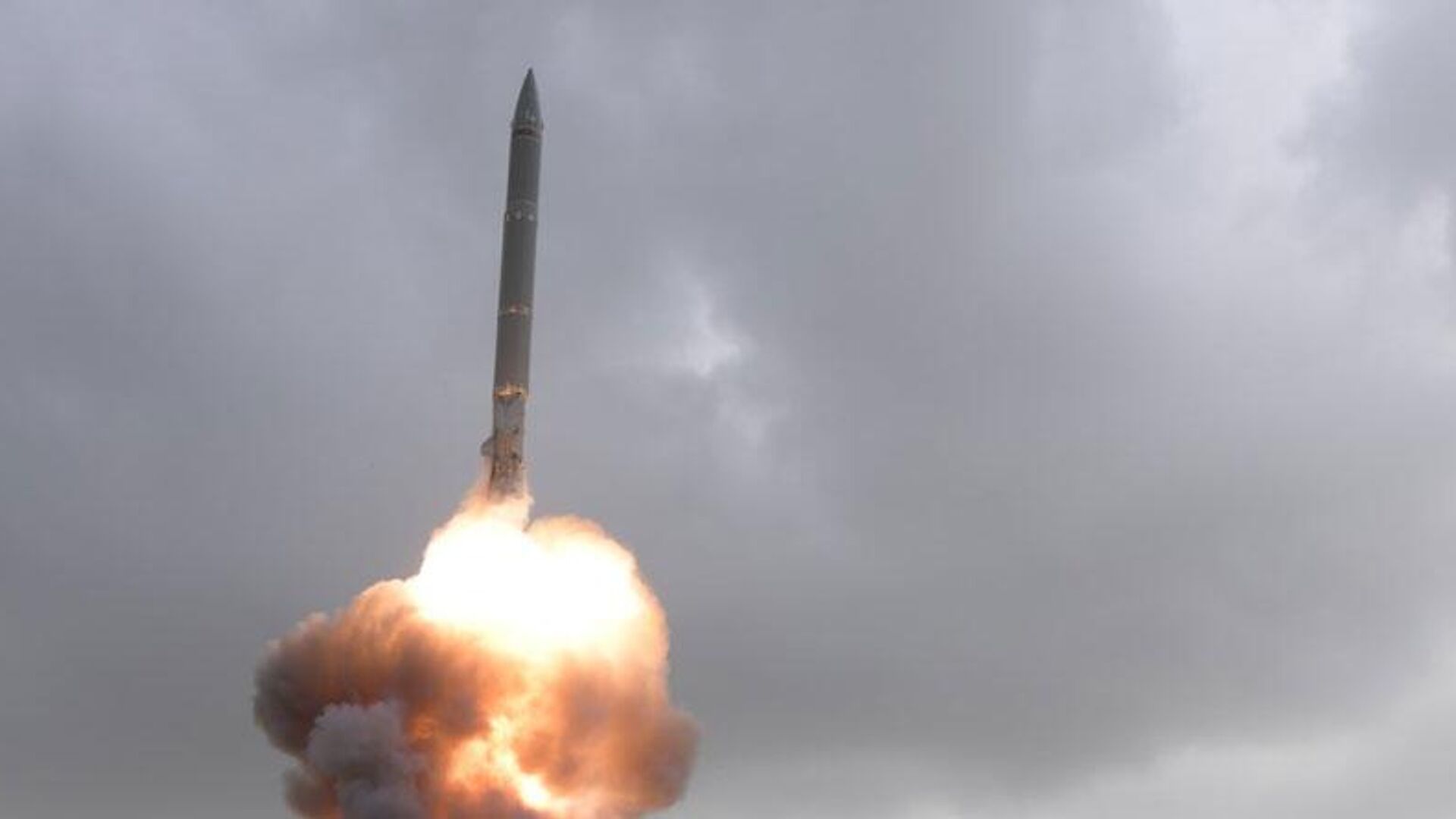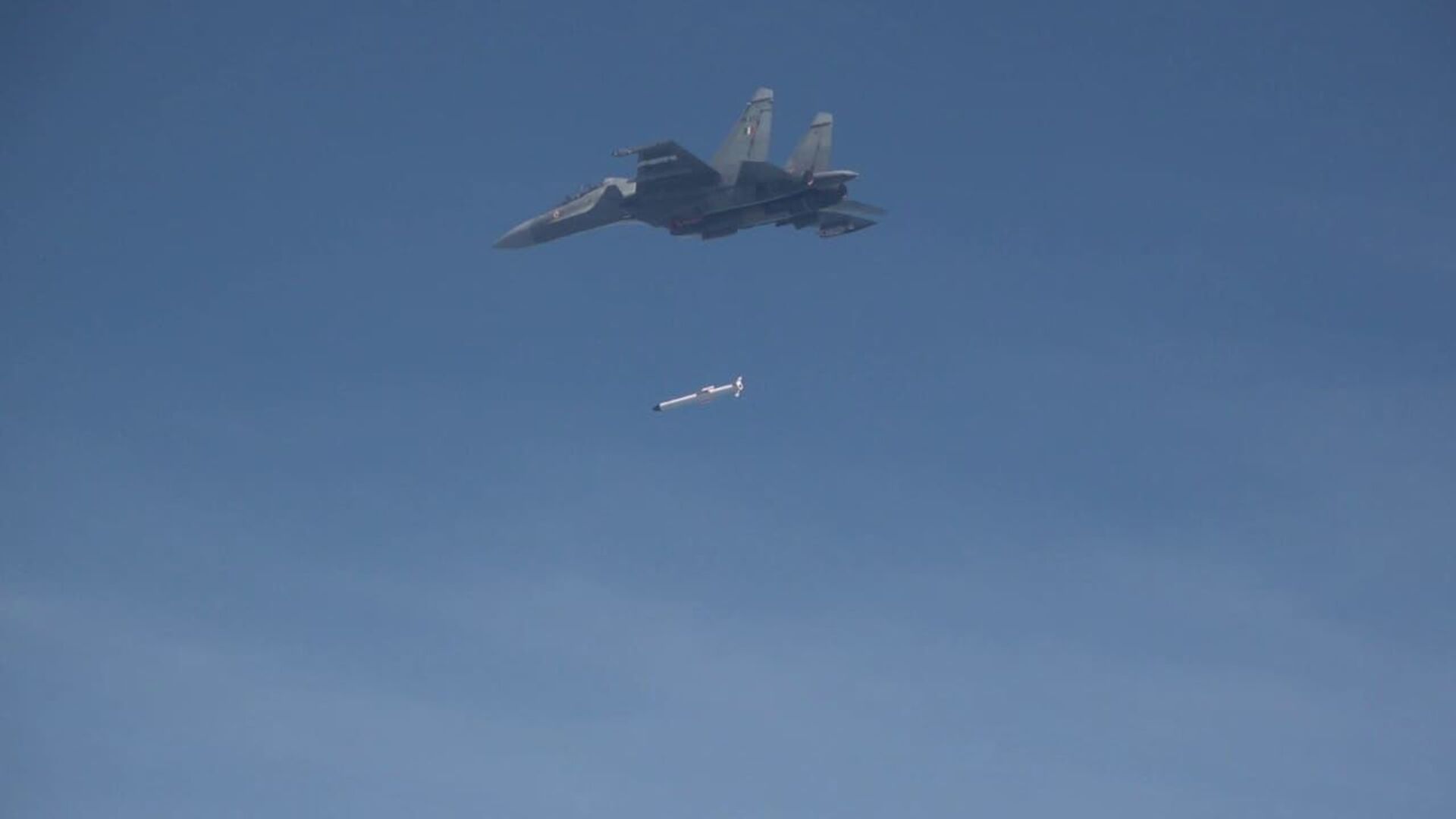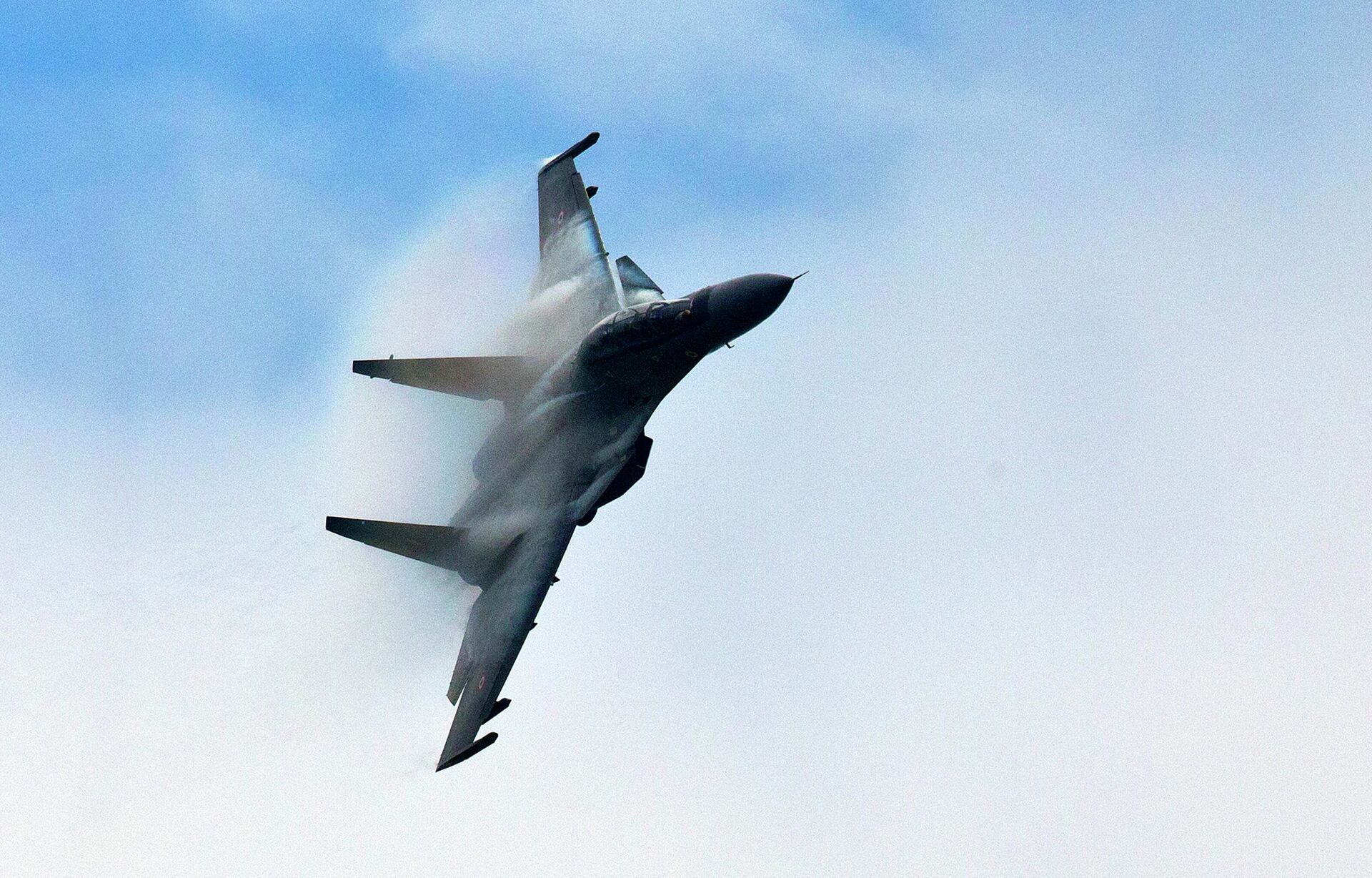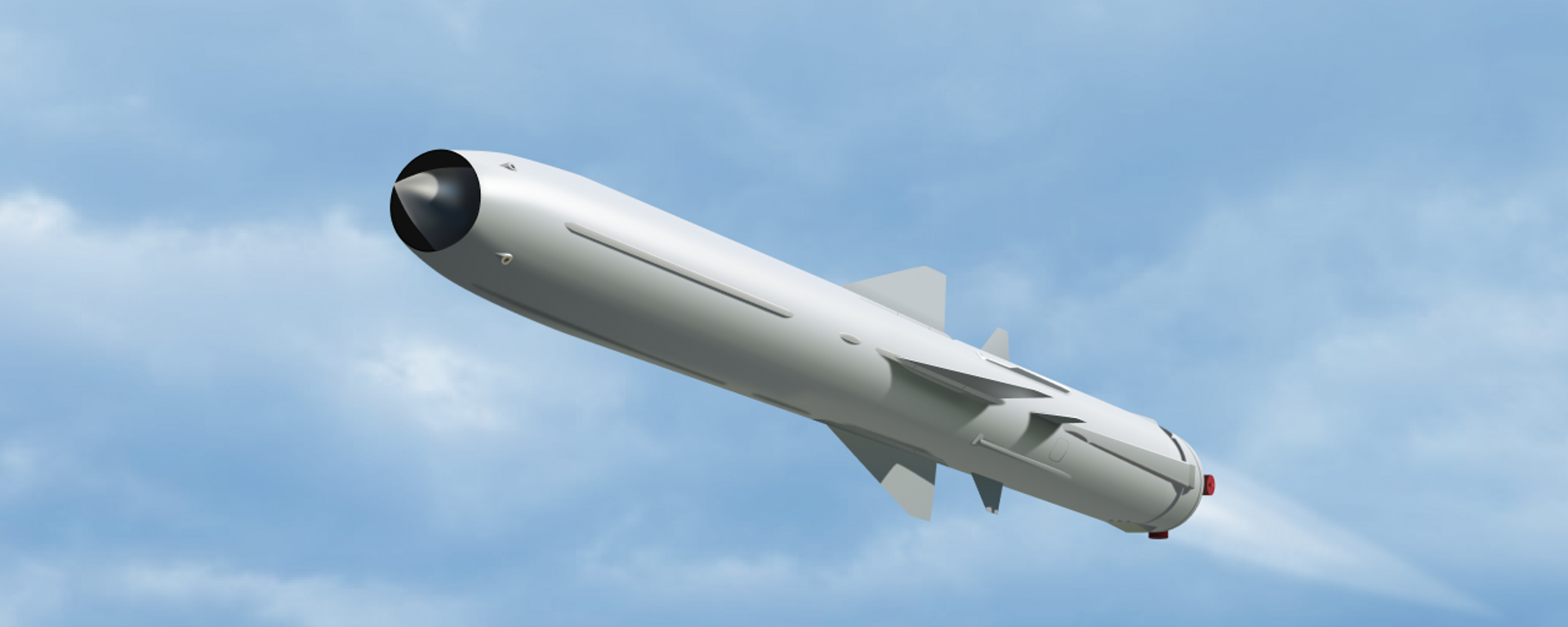https://sputniknews.in/20230727/india-gets-supersonic-death-missile-inspired-by-russian-rocket-3221995.html
India Gets 'Supersonic Death' Missile Inspired by Russian Rocket
India Gets 'Supersonic Death' Missile Inspired by Russian Rocket
Sputnik India
RudraM-II is India's latest anti-radiation missile that could send a chill down the spine of the South Asian nation's adversaries.
2023-07-27T16:16+0530
2023-07-27T16:16+0530
2024-06-10T17:02+0530
india
missiles
supersonic missile
missile strike
delhi
new delhi
sukhoi su-30mki
russian arms supplies
moscow
ukraine
https://cdn1.img.sputniknews.in/img/07e7/07/1b/3225759_5:0:796:445_1920x0_80_0_0_81395646171d2f70cba8d50c7ed8d14a.jpg
In a major development that could send a chill down the spine of India's adversaries, the chief of the country's Defense Research and Development Organization (DRDO), Dr. Samir V Kamat, has announced that New Delhi has successfully test-fired the latest version of its anti-radiation missile, called the RudraM-II.What is an Anti-Radiation Missile?Despite its moniker, an anti-radiation missile has nothing to do with radiation. It is designed to destroy the enemy's air defense system, including radars, radio frequency assets, and other communication equipment.Indian History of Anti-Radiation Missiles Until 2020, India did not produce it's own ARM and relied on Russian-supplied Kh-31 missiles to pierce the enemy's air defenses.The Indian Air Force's (IAF) first tryst with anti-radiation missiles came in 2001, when New Delhi purchased nearly 150 ARMs from close ally Moscow, a combination of Kh-31As and Kh-31Ps. Subsequently, India acquired the Kh-31PD missiles, the more advanced and lethal version of the weapon in 2019. Both the IAF and the Indian Navy currently use the Kh-31 missiles.'Supersonic Death' in Ukraine The Kh-31PD missiles are presently in operation in Ukraine with Russia deploying them extensively to hit Kiev's air defense network, something military planners in New Delhi have watched with keen interest. According to the Russian Ministry of Defense, the Kh-31PDs have achieved a 98 percent kill rate against Ukrainian forces, releasing several videos in support of its claims where Su-35 and Su-30SM fighters could be seen firing these missiles.Having a range of 250 km and a warhead weighing 110 kg, the Kh-31PD can be fired from an elevation of up to 15 km from an aircraft.What Helps the RudraM-II Wreak Havoc on the EnemyInspired by the Kh-31 series of missiles, India's RudraM-II is said to be equally good at taking out radar installations as well as wreaking havoc on the surface-to-air missile systems of the adversary. While its previous variant could only be fired by India's Russian-origin Sukhoi Su-30MKI warplanes, the advanced and modern version can also be launched from the IAF's Mirage-2000 fighters, acquired from France in the 1980s, giving more teeth to the force's capabilities.While RudraM-II's predecessor employed a "passive homing head (PHH)" for targeting the enemy's ground-based radars, including communication assets and command and control system, the RudraM-II's capabilities have been enhanced with the addition of an Imaging Infrared (IIR). With IIR and PHH working in tandem, RudraM-II can easily attack enemy bunkers, airbases, arms and ammunition depots, aircraft hangars, etc, in addition to striking "radiation-emitting targets."
https://sputniknews.in/20230725/this-100-on-target-russian-brahmos-sends-chills-up-ukraines-spine-3167011.html
india
delhi
new delhi
moscow
ukraine
Sputnik India
feedback.hindi@sputniknews.com
+74956456601
MIA „Rossiya Segodnya“
2023
Pawan Atri
https://cdn1.img.sputniknews.in/img/07e6/0c/13/139630_147:0:831:684_100x100_80_0_0_8fa2b25903e7787fe6a2698552c167df.png
Pawan Atri
https://cdn1.img.sputniknews.in/img/07e6/0c/13/139630_147:0:831:684_100x100_80_0_0_8fa2b25903e7787fe6a2698552c167df.png
News
en_IN
Sputnik India
feedback.hindi@sputniknews.com
+74956456601
MIA „Rossiya Segodnya“
Sputnik India
feedback.hindi@sputniknews.com
+74956456601
MIA „Rossiya Segodnya“
Pawan Atri
https://cdn1.img.sputniknews.in/img/07e6/0c/13/139630_147:0:831:684_100x100_80_0_0_8fa2b25903e7787fe6a2698552c167df.png
drdo rudram 2 missile, what is rudram-2, rudram 2, india's super killer missile, india's first indigenously developed anti-radiation missile, how fast is the rudram-2 missile, what is the latest missile of drdo, what is the cost of rudram missile, kh-31, russia's anti-radiation missile, su-57 armed with supersonic death, supersonic air to surface ballistic missile, which is the best anti-radiation missile in the world, what is the anti radiation weapon of india, what is the range of the rudram-2 missile, how fast is the anti-radiation missile, rudram-ii missile, what is rudram-ii, rudram-ii,
drdo rudram 2 missile, what is rudram-2, rudram 2, india's super killer missile, india's first indigenously developed anti-radiation missile, how fast is the rudram-2 missile, what is the latest missile of drdo, what is the cost of rudram missile, kh-31, russia's anti-radiation missile, su-57 armed with supersonic death, supersonic air to surface ballistic missile, which is the best anti-radiation missile in the world, what is the anti radiation weapon of india, what is the range of the rudram-2 missile, how fast is the anti-radiation missile, rudram-ii missile, what is rudram-ii, rudram-ii,
India Gets 'Supersonic Death' Missile Inspired by Russian Rocket
16:16 27.07.2023 (Updated: 17:02 10.06.2024) The RudraM-II is comparable in characteristics to Russia's Kh-31, which India acquired earlier for its Su-30MKI jets. Russian pilots call it 'Hypersonic Death' due to its impressive speed and counter-attack capability.
In a major development that could send a chill down the spine of India's adversaries, the chief of the country's Defense Research and Development Organization (DRDO), Dr. Samir V Kamat, has announced that New Delhi has successfully test-fired the latest version of its anti-radiation missile, called the RudraM-II.
What is an Anti-Radiation Missile?
Despite its moniker, an anti-radiation missile has nothing to do with radiation. It is designed to destroy the enemy's air defense system, including radars, radio frequency assets, and other communication equipment.
Anti-radiation missiles (ARMs) are a new addition to India's vast missile arsenal, with the country's maiden anti-radiation missile named RudraM successfully flight-tested in October 2020.
Indian History of Anti-Radiation Missiles
Until 2020, India did not produce it's own ARM and relied on Russian-supplied Kh-31 missiles to pierce the enemy's air defenses.
The Indian Air Force's (IAF) first tryst with anti-radiation missiles came in 2001, when New Delhi purchased nearly 150 ARMs from close ally Moscow, a combination of Kh-31As and Kh-31Ps.
Subsequently, India acquired the Kh-31PD missiles, the more advanced and lethal version of the weapon in 2019. Both the IAF and the Indian Navy currently use the Kh-31 missiles.
'Supersonic Death' in Ukraine
The Kh-31PD missiles are presently in operation in Ukraine with Russia deploying them extensively to hit Kiev's air defense network, something military planners in New Delhi have watched with keen interest.
According to the Russian Ministry of Defense, the Kh-31PDs have achieved a 98 percent kill rate against Ukrainian forces, releasing several videos in support of its claims where Su-35 and Su-30SM fighters could be seen firing these missiles.
As the missile is invariably undestroyable by the anti-aircraft defenses of the adversary because of its high speed, which stands at 2,160 to 2,520 km per hour, the Kh-31PD has been dubbed 'Supersonic Death' by Russian pilots who have experienced its pinpoint accuracy first-hand.
Having a range of 250 km and a warhead weighing 110 kg, the Kh-31PD can be fired from an elevation of up to 15 km from an aircraft.
What Helps the RudraM-II Wreak Havoc on the Enemy
Inspired by the Kh-31 series of missiles, India's RudraM-II is said to be equally good at taking out radar installations as well as wreaking havoc on the surface-to-air missile systems of the adversary.
While its previous variant could only be fired by India's Russian-origin
Sukhoi Su-30MKI warplanes, the advanced and modern version can also be launched from the IAF's Mirage-2000 fighters, acquired from France in the 1980s, giving more teeth to the force's capabilities.
As per DRDO, the RudraM-II has a payload capacity of 200 kg. It can attain a maximum speed of 6,791 km/h (Mach 5.5) and can be sent down to annihilate enemy radar positions from an altitude of 3 to 15 km. All these specifications suggest that India's defense scientists have tried to offer its forces an extremely potent and enhanced version of the Russian Kh-31PDs.
While RudraM-II's predecessor employed a "passive homing head (PHH)" for targeting the enemy's ground-based radars, including communication assets and command and control system, the RudraM-II's capabilities have been enhanced with the addition of an Imaging Infrared (IIR).
With IIR and PHH working in tandem, RudraM-II can easily attack enemy bunkers, airbases, arms and ammunition depots, aircraft hangars, etc, in addition to striking "radiation-emitting targets."





